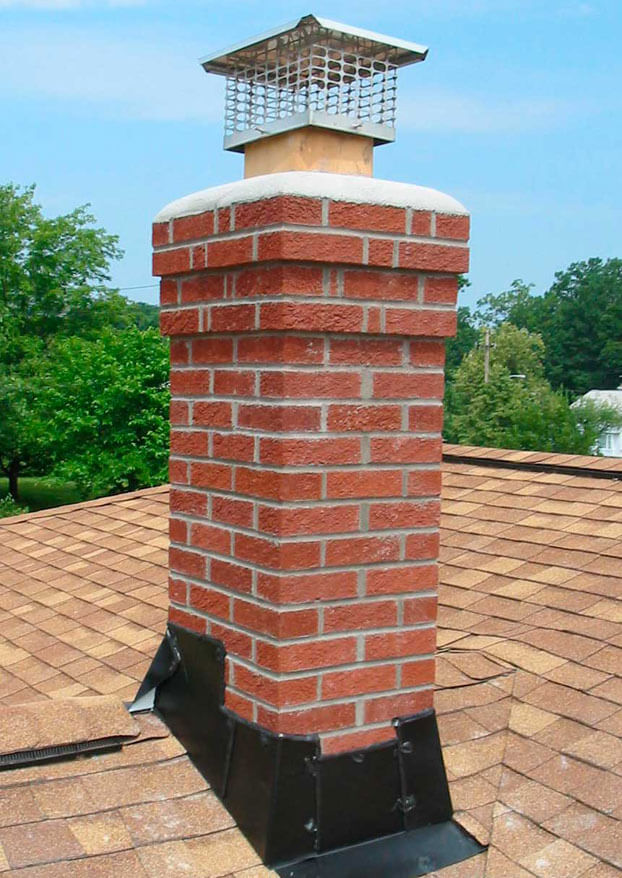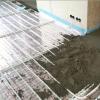1.
2.
3.
In order for heating equipment to work reliably and efficiently, great attention should be paid to such an element as a heating boiler. However, it is equally important not only to properly assemble and connect this mechanism, but also to ensure that all the combustion products produced in it are properly discharged to the outside. Therefore, further we will talk about what the chimney diagram for a gas boiler is, as well as about the features and technical characteristics of the heating equipment itself.
When installing a flue pipe, it is very important to follow all the steps in accordance with all installation codes and regulations. According to SNIP, chimneys for gas boilers are objects that require increased attention from the owners, as the number of people poisoned by carbon monoxide is growing from year to year.
In addition, the arrangement of the boiler room, where the entire coolant is heated, is of no small importance. An incorrectly designed boiler room, as well as an incorrect calculation of the chimney for a gas boiler, can cause a serious health hazard to the owners living in the house.
Moreover, the chimney scheme for a gas boiler, as a rule, is seriously checked by special authorities, and if it does not comply with all installation standards, it will simply not be accepted, which will lead to additional financial costs.

Therefore, it is required to start all work, first of all, with the equipment of the boiler room in accordance with all the rules. The main criterion that should be taken into account in the process of deciding what the appearance and characteristics of the heating system will be is the type of heating boiler used. The same factor also affects the parameters and cost of building a chimney system.
There are two main types of gas boilers:
- Gas boilers, equipment with an open-type burner. This option will be relevant only for floor-standing devices, the power of which is more than 30 kW. The main amount of gas on which such a boiler operates is not in a special closed chamber, but the air required for combustion comes directly from the boiler room. In view of this method of arrangement, it is very important to equip the room where the equipment is located with a good ventilation system so that more air enters the fire. In case of its shortage, there is a risk of carbon monoxide emission, which is extremely dangerous for any living beings, including humans. The dimensions of the chimney for a gas boiler of this type are traditional, its design has a vertical shape and is represented by a boiler pipe rising above the roof.
- Gas boilers with closed type burner. This option is suitable for units whose power does not exceed 30 - 35 kW. In this case, the gas is in no way connected with the boiler room, and its output is carried out through a special hole that serves as a place for fixing the coaxial type chimney pipe. This type of chimney is relatively new and differs from classical designs in that it is equipped according to the principle of placing one pipe inside another. Here it is very important to take into account the diameter of the chimney for a gas boiler, since that part of it, which has a smaller diameter, is inserted into another, larger one. At the same time, all combustion products are removed through the inner element, and the air necessary for combustion enters through the outer pipe. Such a system requires the use of special pumps, due to which the movement of air flow is carried out. As for the location, the coaxial chimney, in contrast to the previously described, must be mounted exclusively in a horizontal position.

Chimney installation standards for a gas boiler
In order to build a reliable chimney system, it is very important to follow certain rules that are regulated by special authorities. In addition, it is important to strictly follow all fire safety standards in order to make the boiler room as productive as possible and at the same time eliminate any risk.Installation of an open chimney system, considering the diameter
The standards governing the installation of this chimney option for a gas boiler are as follows:- the chimney pipe should not have more than three bends and not have many bends;
- the material used for the construction must be non-combustible;
- it is very important to equip the chimney with thermal insulation in order to reduce the amount of condensate that appears in it;
- on the pipe section, a special hole with a damper should be wielded, which is necessary for periodic cleaning of the system;
- another hole should serve to collect condensate;
- the height of the gas boiler chimney, as well as its diameter, must comply with the parameters specified in the instructions for the equipment;
- the location of the open chimney must be strictly vertical, while the maximum allowable deviation is 30 °;
- in order to prevent various debris from outside and precipitation from entering the pipe, it is required to equip a special protective cone-shaped umbrella at its end;
- the minimum height of the pipe above the ridge of a gable roof should be 0.5 m. In the event that the roof is flat, then this distance should increase to at least two meters.

- brick;
- asbestos cement;
- lime mortar.
In addition to thermal insulation, the pipe should also be equipped with gas insulation so that combustion products do not pass through its walls. This will protect residents from poisoning and increase the safety performance of the equipment. It is extremely important to equip all joints of the chimney as tightly as possible.
You can build an open chimney system in one of the following ways:
- brick chimney. This material is widely used for various buildings, however, it is the least suitable for such a system due to the fact that combustion products adversely affect the integrity of the brickwork, which inevitably reduces the life of the entire structure.
- Steel sheet chimney. Such material is perfect not only for external, but also for interior decoration of the walls of the chimney pipe.
- Aluminum sheets are not more popular than steel. They can also equip the interior of the system.
- Enamelled type pipes. Often, such material already has built-in thermal insulation, so if you use it as the main one, you will not have to additionally insulate the chimney.
- brick;
- concrete;
- container for mixing concrete;
- construction trowel;
- a special level that serves to verify the correct vertical laying;
- steel sheets designed to finish the pipe from the inside and to create a protective umbrella.

Installation of a chimney for a gas boiler of a closed type
This option involves the use of a coaxial type chimney. When calculating the dimensions of the chimney for a closed-type gas boiler, it is important to focus on the parameters of the outlet pipe - its diameter should be smaller than the diameter of the pipe itself.The installation rules for this chimney option are as follows:
- unlike an open system, a coaxial chimney is located exclusively horizontally;
- the minimum distance from the ground is 2 m;
- the pipe should be located at least two meters horizontally from the ventilation holes, as well as windows and doors;
- the minimum vertical section on which such a chimney is mounted from the window openings above is 1 m;
- it is important to install the system so that there are no significant obstacles nearby, such as walls, fences, etc. (at a distance of approximately 1.5 m);
- it is strictly forbidden to bring the pipe out in various arches, tunnels and passages;
- so that all the condensate that appears is collected in one place, during the installation of the chimney pipe, it is important to place it at a certain slope (approximately from 6 ° to 12 °).
When equipping a chimney system, it will be useful not only to follow all the above rules, but also to study various photo options for these designs and watch videos that describe in detail the entire installation process.

